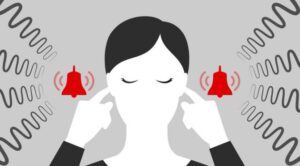A frequency modulated (FM) system is used to help someone hear better in noisy environments such as the classroom, restaurants, in the car, etc. An FM system is made up of two parts: the transmitter/microphone worn by the teacher (or speaker) and a receiver for the child. The FM system works by allowing the transmitter/microphone to send the signal directly to the child’s receiver.
Types of transmitters:
- A small microphone clipped to the speaker’s shirt or worn around the neck

Types of receivers:
- Personal receivers:
- Many hearing aids now have built-in receiver options, but for those that do not a small “boot” can be attached to the battery door of an existing hearing aid.
- A small desktop speaker on the students desk
- A small device worn on the ear for children who do not have hearing aids or cochlear implants

- Group receivers
- Larger speakers in the classroom

Shouldn’t hearing aids or cochlear implants be enough? Why does my child need an FM system in school?
Hearing aids and cochlear implants help a child hear better in most situations. However, in a noisy classroom environment it is extremely important that your child does not miss any educational information from their teacher. Most classrooms have excessive background noise (students talking, papers rustling, the teacher walking around the room or back turned during instruction, etc.) and even for a child with typical hearing it can be challenging to hear what the teacher is saying. An FM system will send the teacher’s voice directly to the student regardless of background noise or where the child is sitting in the classroom! This ensures that your child does not miss out on important academic instruction. Talk to your pediatric audiologist or educational audiologist to learn more about FM systems in the classroom.



